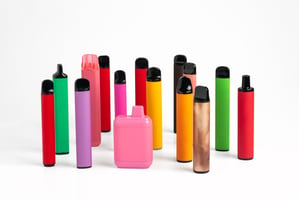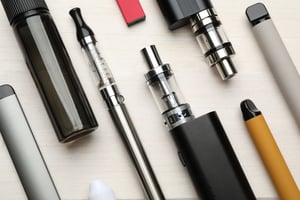Stoptober is running for its 13th edition in 2024 and now with more smoking cessation tools available, there are more ways for the public to kick their smoking habits. E-cigarettes, or vapes, have...
Integrating age-gating tech into new nicotine products
Nicotine

Nov 20, 2024 | Published by Chris Allen
Nicotine
~ Why new age verification technology could help solve youth appeal ~
The use of e-cigarettes has become more prominent as a smoking cessation tool and has gained popularity among young people. This has caused governments to act, with administrations across the UK introducing bans on disposable vaping devices to curb their popularity. One solution is for manufacturers to ensure proper age-gating technology is in place. Chris Allen, CEO outlines the age-gating options that are available to manufacturers, and how it can help bring products to market quicker.
As governments ban disposables, there is an increasing focus on what manufacturers and retailers can do to replace them, but without treading a similar path with subsequent vaping products.
A shift towards reusable, pod-based systems is likely given that, prior to disposables’ rise, these were the main consumer products to emerge as the main alternative to smoking.
Therefore, any leading product that emerges following a disposables ban must not follow the same route as disposables when it comes to youth appeal.
While many suggest different flavours are part of the youth appeal, there is evidence from studies, including one from the University of Bristol, published in the Journal of Harm Reduction, that a variety of flavours is one of the factors helping smokers quit, with some participants in the study suggesting that a ban on flavours could lead to those who had quit using vapes to return to combustible cigarettes[1]. However, manufacturers may need to take steps to ensure new products do not end up in the hands of young people.
Indeed, in the US, the Food and Drug Administration (FDA) has placed stringent marketing restrictions to prevent youth access and exposure, including the enforcement of existing laws, prohibiting vending machines from selling the products and its Youth Tobacco Prevention Plan, which features education programmes for both teenagers and for retailers. With flavoured products, there is a higher burden of proof on the manufacturer that the benefit to adults who use combustible cigarettes outweighs the increased risk of youth use.
Age-gating
To ensure that vapes don’t end up in the hands of young people, age verification technology has been suggested as one solution to combat this issue. There are several passive youth access prevention measures in place such as those that prohibit the sale of vapes to minors, and the prevention of marketing targeting these age groups, but the evidence suggests this is insufficient.
There is a clear need to develop active measures that ensure vaping products do not end up in young people’s hands. Therefore, there has been a market trend towards biometric restrictions for age verification. Retailers, for example, have been experimenting with digital identification tools, but there is scope for manufacturers to include age-gating technology in their product design.
There is a chance that regulators, such as the FDA, will look favourably on age-gating technology being included as part of the product. Rather than waiting several years for a marketing order like with existing smoking cessation products, manufacturers who include age-gating technology may find a quicker route to market.
To do this, manufacturers must build any age-gating technology into their product design lifecycle as early as possible and demonstrate the benefits to adult smokers. It’s essential that the robustness and security of the technology is demonstrated during any regulatory submission.
An example may be through a mobile app and user database, but manufacturers need to pay a lot of consideration to the technology infrastructure – in how any software works with the device and any third-party age verification tool.
By working with an expert partner from the outset on product design, analytical testing, stability studies and regulatory standards, can help bring your tobacco product to market quicker. Broughton has extensive experience in ensuring manufacturers have robust data that has been rigorously test, for more information visit our dedicated webpage.
[1] https://bristol.ac.uk/neuroscience/news/2024/vape-falvour.html


